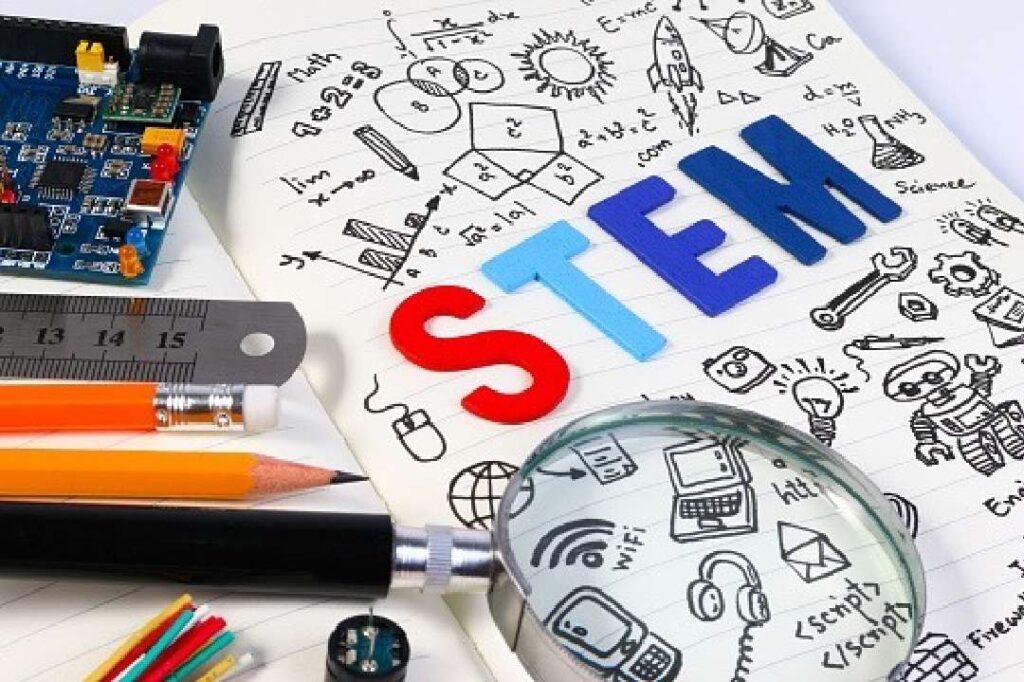3 Ways Edtech Helps Students Learn STEM Subjects
“Excursions are impossible to organize now”
Joshua Ashikem, an Abuja-based senior secondary school science teacher, has always loved sharing knowledge. Since his national youth service when he taught physics to teens, he’s embarked on a 10-year teaching career. Ashikem is a fierce supporter of educators. Graduating with a Bachelor’s degree in electrical engineering, he’s often asked by his students: why did he choose to teach instead of becoming an engineer?
“All the engineers you know were trained by teachers. They wouldn’t be here otherwise,” he says.
Although online learning has gone mainstream with many schools and families alike, Ashikem was quick to recognize the power of using edtech in the classroom even before the pandemic. He shares three ways edtech helps students learn STEM subjects.

With visuals, abstract subjects are easier to understand
Even for the most enthusiastic teachers, like Ashikem, technical subjects are challenging to teach in today’s educational system. Ashikem teaches technology and engineering drawing to 15-year old students. Given the abstract nature of both subjects, students can struggle to understand them. “Concepts involving 2 or 3D dimensions can be difficult to teach in a classroom, especially because students want to learn a certain way. When you teach from a book, they forget. But when you teach the concept with visuals, they remember,” said Ashikem.
To go beyond teaching from the textbook, Ashikem used to plan excursions around Abuja. He found that students grasped and retained scientific concepts more easily through real-world experiences and practical application. But, Ashikem had to give up field trips due to insecurity in the area.
Ever the resourceful educator, Ashikem resorted to teaching with GIFs – they demonstrated the rotation of objects well – and any other audiovisual materials he could get his hands on. But, resources were limited. The few videos he could find on YouTube were made by non-Nigerian creators. Their accents were hard to understand for students. And, the curriculum wasn’t the same as in Nigeria.
With field trips out and few STEM-related visual online resources, Ashikem was relieved when he discovered the Nigerian edtech app, uLesson. The app was another visual method for helping students master abstract STEM subjects. Twice a week, students watch math and science videos on their laptops during prep time. The colorful and detailed videos provided the visual learning that is critical to teaching STEM subjects. Ashikem noticed how prep time changed after the students started studying the app. “Before it is time, they are already there, unlike normal prep time when you need to get them to go to class and quiet down,” he said. “The kids know there will be someone using graphics and animated videos to explain concepts.”
Motivated students take ownership of their education
Besides students being in a rush to get to prep time, Ashikem also noticed a change in students’ ownership towards their studies. Given an engaging and independent way to study, students are motivated to learn ahead of the classroom instruction – even for difficult subjects. Students tend to struggle with certain concepts in maths, such as variation. Yet, one day, while Ashikem was giving a lesson on joint variation, one of his students raised her hand. She explained how the calculation would have come out differently if the question had asked for a partial variation. He realized she had studied ahead of the class using uLesson.
It wasn’t the only case.
“‘Another day I entered the class and a student told me not to worry: she will teach the lesson and I can just sit back,”’ he said amused.
This is one of the ways Edtech helps students learn STEM subjects.

Personalized learning caters to each student’s unique needs
Students learn at a different pace. Every student has varying levels of self-discipline and the ability to learn without distraction. According to Ashikem, uLesson videos on similar topics are grouped together, making it easy for students to study and measure their progress. They can rewatch videos on concepts they find challenging. Ashikem liked how the app tests after each video to determine if students have mastered the concepts. This personalized learning helps students to go at their own speed and is one of the ways Edtech helps students learn STEM subjects.
The game feature is one of his favorites. Students can take a study break to play games on the app. They’re learning while engaging in an academic subject at the same time.
Edtech helps students – and teachers too
Ashikem has turned into an edtech advocate. On the value of the extra support edtech apps, like uLesson, provide to students, he said: “Parents didn’t need much convincing.” In fact, it can encourage learning for the whole family. After watching her child use the uLesson app, one mother even started using it herself to brush up on old secondary school chemistry modules.
Ashikem believes that edtech is beneficial for teachers as well as their students. “For teachers, it is less strenuous on us to teach effectively. It’s encouraging to see students become more passionate about their education,” he said.




One comment
[…] He recommends school owners get the uLesson app for students enrolled in their school to further boost learning outcomes. […]